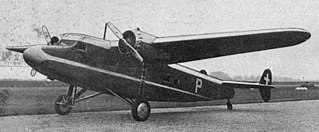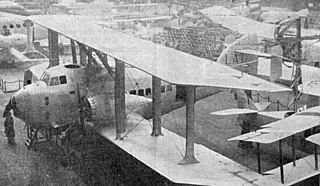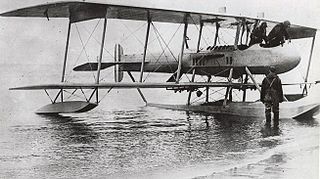
The Avro Type D was an aircraft built in 1911 by the pioneer British aircraft designer A.V. Roe. Roe had previously built and flown several aircraft at Brooklands, most being tractor layout triplanes. The Type D was his first biplane.

The BAT F.K.28 Crow was a British single-seat ultralight aircraft produced by British Aerial Transport Company Limited of London. It was intended to be the "aerial equivalent of the motor cycle".

The Koolhoven F.K.51 was a 1930s Dutch two-seat basic training biplane built by the Koolhoven Company.

The Koolhoven F.K.50 was a 1930s Dutch eight-passenger light transport monoplane designed and built by Koolhoven.

The PWS-20 was a Polish single-engine high-wing 8 passenger airliner, built in the PWS factory and when it made its first flight in 1929 it became the first Polish-designed transport aircraft to fly.

The PWS-54 was a Polish single-engine passenger and mail plane for three passengers; one alone was built in 1932 in the PWS factory.

The PZL.4 was a Polish three-engine passenger aircraft for 10 passengers, built in PZL factory in 1932, which remained a prototype. It was the first Polish-designed and produced multi-engine plane.
The Koolhoven F.K.42 was a parasol-wing, two-seat training monoplane manufactured by Koolhoven in the Netherlands. Only one was built.
The Armstrong Whitworth F.K.5 and F.K.6 were experimental triplanes built as escort fighters by Armstrong Whitworth during the First World War. They carried two gunners in nacelles mounted on the centre wing. One example of each type was built, with no further development or production following.

The Latécoère 4 was a three-engined, 15-passenger biplane built in France in the early 1920s. It proved difficult to fly and was discontinued, though a second machine was completed as the Latécoère 5 bomber.
The Latécoère 24 was a French three-engined parasol winged flying boat, built in 1927 to test the longer stretches of the South Atlantic crossing. Trials showed that it was overweight and consequently performed below specification.

The Carden-Baynes Bee was a 1930s British two-seat aircraft, with twin engines in pusher configuration buried in the wings. The wings rotated for storage. Financial problems limited the Bee to a single flight.
The Koolhoven F.K.57 was a twin-engined, gull-winged monoplane built in the Netherlands as a personal transport for the Director General of Royal Dutch Shell. Only one was made, flying chiefly in Europe in the year before World War II, but destroyed when Germany invaded the Netherlands in May 1940.

The Gallaudet D-4 was an unusual biplane designed and built by Gallaudet Aircraft Company for the United States Navy. It was powered by a Liberty L-12 engine buried within the fuselage which turned a large, four-bladed propeller attached to a ring around the center fuselage. Only two were constructed, with the second being accepted by the Navy for service as an observation aircraft.

The Aeroput MMS-3 was the first Yugoslavian twin-engined light three-seater passenger aircraft, produced by Aeronautical service of Aeroput for its own needs in 1935 year. The chief designer was the aviation engineer Milenko Mitrović - Spirta, the CTO of Aeroput.

The Koolhoven F.K.54 was a Dutch single-engine, three-seat touring aircraft with a retractable undercarriage. It flew shortly before the start of World War II and its development was abandoned after its first flight as attention turned to military aircraft.
The NVI F.K.29 was a small Dutch biplane transport, carrying two passengers who boarded after the nose, with its single engine and fuselage, had been swung open. It was intended to link small local fields to main airports.

The NVI F.K.35 or Koolhoven F.K.35 was a two-seat fighter aircraft built in the Netherlands during 1926. It was completed and exhibited but, through a combination of ground accident and financial problems, never flown.

The 1910 Deperdussin monoplane, is a general term for a variety of Deperdussin aircraft models built between 1910 and 1911. Initially released in August 1910, it was the first aircraft to be built in significant quantities by Aéroplanes Deperdussin. Many variations of the aircraft were produced, differing in size, engine type and horsepower and tail configuration. These were loosely labelled as the "Deperdussin monoplane", but were sometimes more specifically classified either by function or by seating-type. A number of Deperdussin monoplanes were flown successfully in air races and gained several speed and endurance records during 1911–1912. Several have survived, including an airworthy example in the Shuttleworth Collection in England.

The SABCA Demonty-Poncelet monoplane, Demonty-Poncelet limousine or SABCA-DP was a Belgian light aircraft first flown in 1924. It had two comfortable side-by side seats in a glazed cabin. Though it had competition successes in 1924 and 1925, it did not go into production.
















